So, you want to know the best places to see lemurs in Madagascar? Lots of people travel to this fascinating part of Africa in search of these unique animals, but fewer know where to look to maximise their chances of a close encounter.
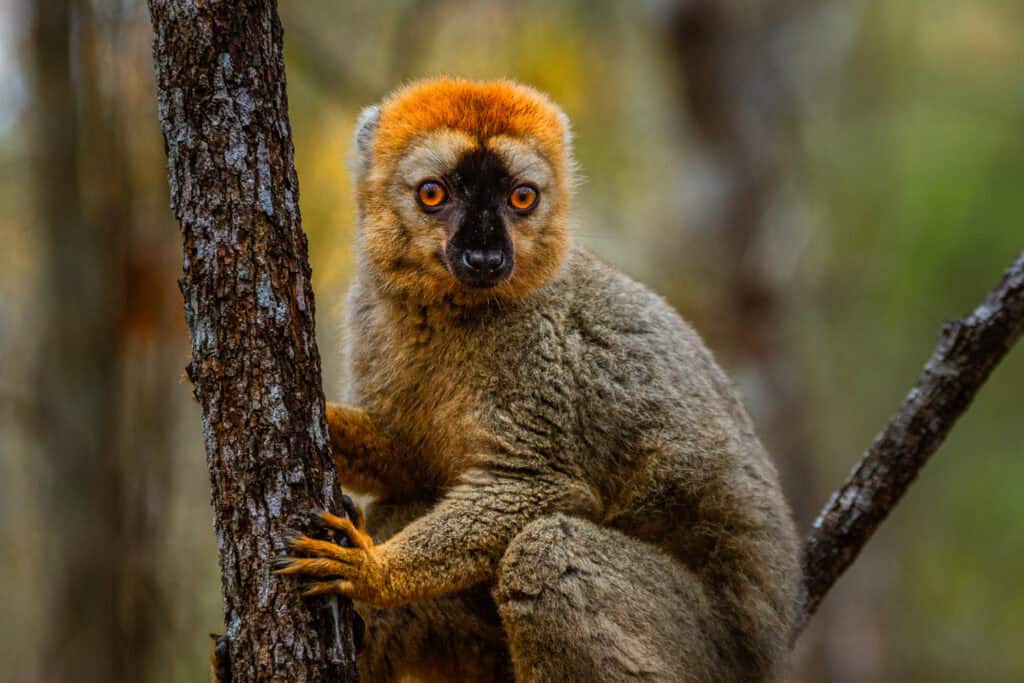
Where to find lemurs in Madagascar
Lemurs are endemic to Madagascar, and it’s impossible for these furry creatures not to come to mind when thinking about the country. Due to Madagascar’s highly seasonal climate, lemur evolution has produced a level of species diversity rivalling that of any other primate group.
Lemurs are intelligent creatures…and a surprisingly good source of entertainment! They often use a wide range of visual signals to accompany their scents and sounds, making them amusing to watch. A lemur’s dexterous hands allow for it to swing across the lush Malagasy canopy, and this can be quite the spectacle for tourists to behold.
With around 100 different lemur species found living on the island, you are likely to encounter them at some point during your trip to Madagascar, but these spots hold your best chance of a guaranteed sighting.
For more information, check out our travel guide to Madagascar.
Travel with a reputable tour company
Local guides are required in all national parks and reserves. But travel in Madagascar also presents many unique logistical challenges so it is best to work with people who know the country well when planning your trip. Remote River Expeditions – Madagascar offers a wide variety of tours throughout the country, with a long and successful track record. You can find out more about arranging a trip to Madagascar with them here.
Remote River Expeditions – Madagascar is also a proud sponsor of the Lemur Conservation Network. Their mission is to ‘raise awareness for lemurs and those working to save them from extinction.’ To learn more about lemurs, where and how to see them and how to help protect them, you can visit their website here.
We also encourage you to check out the Recommendations for Responsible Lemur Watching in Madagascar here.
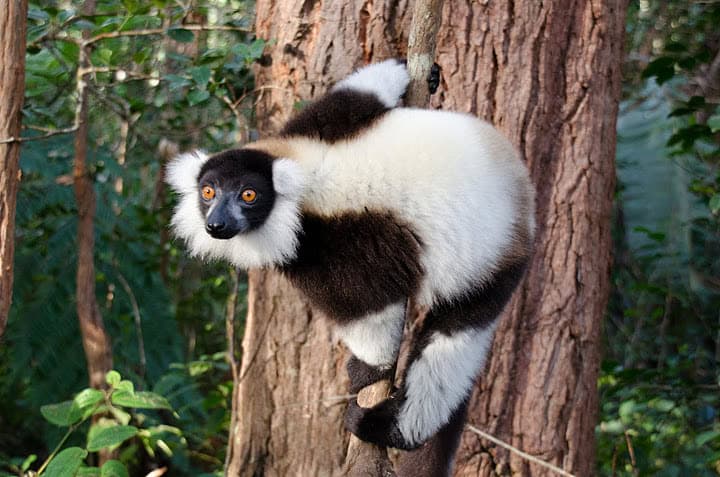
The best places to see lemurs in Madagascar
Ranomafana National Park
Ranomafana is extremely popular with visitors to Madagascar, all eager to see the rich and diverse wildlife it has to offer. Spread across 415 kilometres of picturesque mountainous terrain, this national park includes five different walking trails for travellers looking to catch a glimpse of Madagascar’s favourite animal.
The park is home to over a dozen different species of lemur and you are most likely to encounter black-and-white ruffed lemurs, red fronted brown lemurs, grey bamboo lemurs and the rarer red-bellied lemur.
In addition, star attractions such as the greater bamboo lemur and golden bamboo lemur are now fairly frequently seen, and Ranomafana is the best place to spot these rare species. There is also the spectacular Milne-Edwards’ sifaka – recognisable due to its rich dark brown colouring with cream-coloured sides.
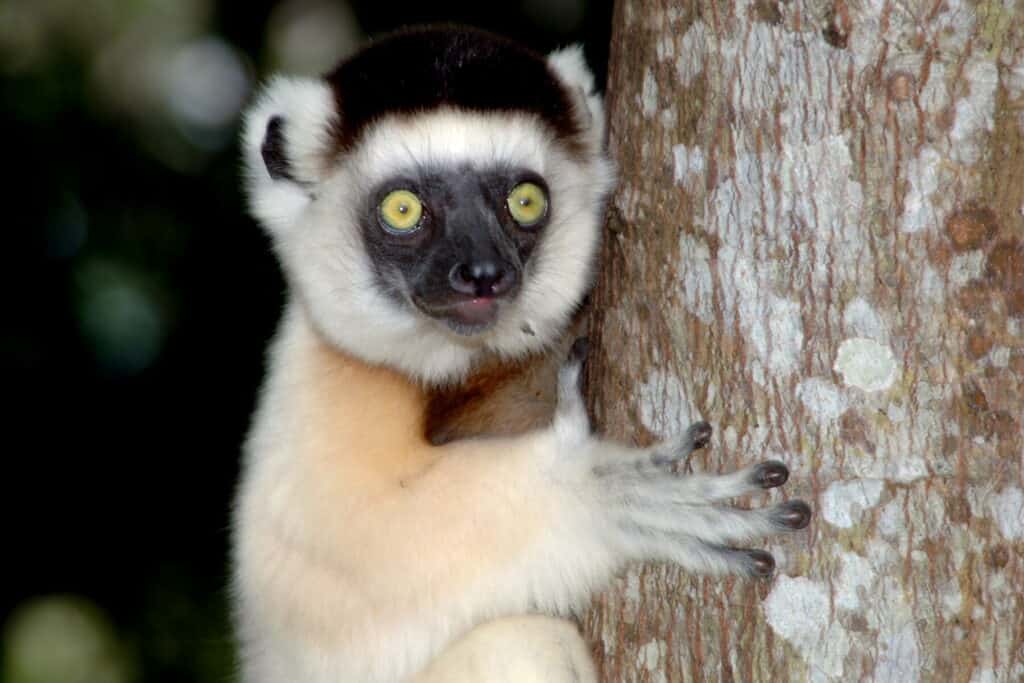
Berenty Reserve
Berenty is one of the most famous reserves in Madagascar, not least for being the site where renowned primatologist Alison Jolly studied lemurs for five decades.
Berenty offers a broad range of forest trails that allow for safe, independent exploring and host some exceptional wildlife. The reserve is renowned for its lemurs; if you have ever seen lemurs in a TV documentary, chances are they were filmed here. There are guaranteed sightings of brown lemurs, ring-tails and sifakas.
Berenty proudly homes approximately 500 confident and friendly ring-tailed lemurs, as well as 300 adorable Verraux’s sifakas. The red-fronted brown lemurs were introduced from the west and are now well established and almost as tame as the ring-tails.
Additionally, a guided night walk in the Spiny Forest is not to be missed for the chance to see the many nocturnal lemurs that live in Berenty, such as grey mouse lemurs and the white-footed sportive lemur. This is one for the adventurers!
Loky-Manambato, Daraina
The main reason to visit the small village of Daraina is to pay a visit to Loky-Manambato, a protected area where beautiful golden-crowned sifaka lemurs live.
This glorious species is one of the rarest of all the lemurs and is among the 25 most threatened primates in the world, and here you are almost guaranteed to see one in its natural habitat. They’re most likely to be seen snoozing during the day but many visitors have been lucky enough to see these creatures effortlessly gliding up to 10m through the air.
Golden-crowned sifaka are regarded as sacred and therefore are not hunted, this means they do not feel threatened by humans and are in fact confident around visitors, offering a memorable experience for many.
In recent years there have been an increased number of sightings of the fascinating – and rarely seen – aye-aye. We recommended you stay overnight for your best chance of catching a glimpse of these elusive creatures.
Still on the fence about booking your trip? Check out this list of the best reasons to visit Madagascar and get inspired.
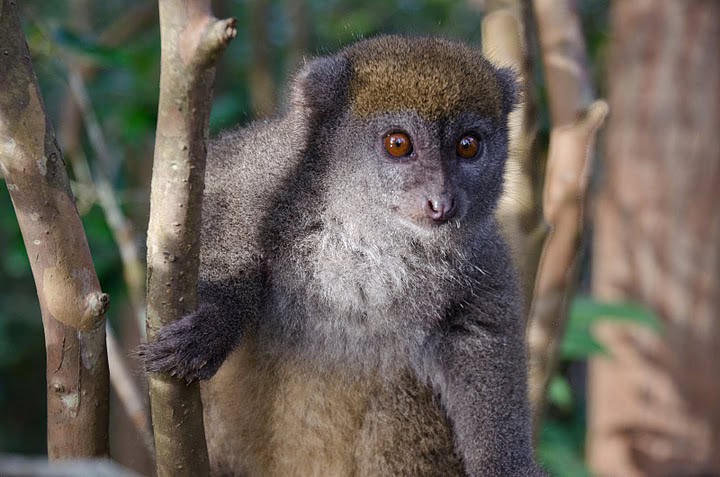
Andasibe Mantadia National Park
This is now one of Madagascar’s most popular parks, due to its close proximity to the capital city of Antananarivo as well as the exceptional fauna it hosts.
Andasibe protects the largest lemur species, the indri, and it is the best place for a guaranteed sighting of these magnificent animals. Enjoy watching in amazement as they propel themselves up to 10m from tree to tree. The indri is also known for its distinct call – a cross between a whale song and a siren that carries for up to 3km.
There are 11 species of lemur altogether in Andasibe, although you probably will not see them all. You may find grey bamboo lemurs, common brown lemurs and perhaps a sleeping woolly lemur.
You’re in safe hands when visiting Andasibe as the guides are among the best in Madagascar, with a great degree of knowledge, enthusiasm and awareness of what tourists want.
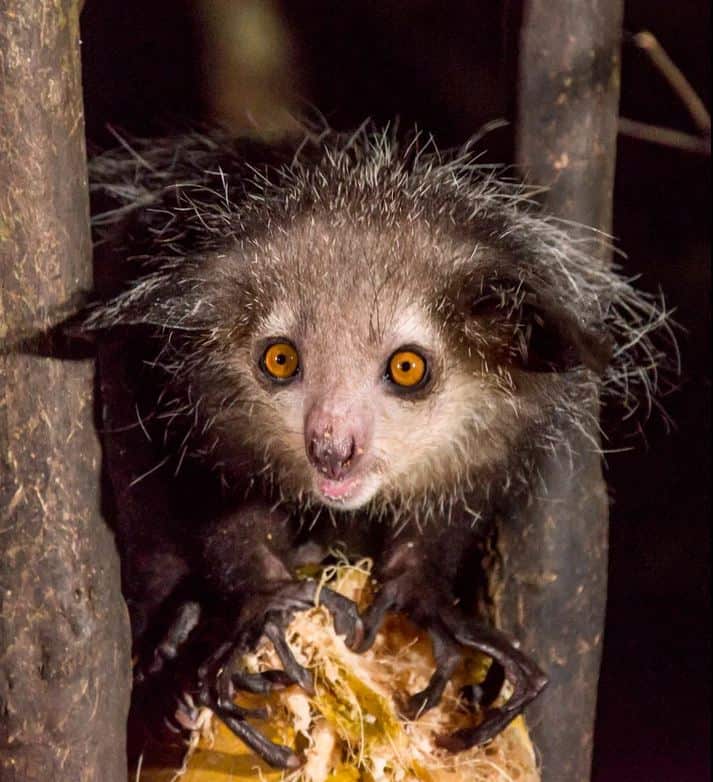
Palmarium Reserve
The majority of people visiting Palmarium Reserve have come with the hopes of seeing the illustrious aye-aye. Situated in the Pangalanes Canal, the reserve was set up partially for the protection of aye-ayes and is also home to indri, black-and-white ruffled lemurs, and crowned lemurs.
Normally aye-ayes live high in the rainforest canopy and have large territories. In Palmarium Reserve, however, their range is restricted by the forested island’s small size, so they are comparatively easy to see. They are also lured out by the abundance of coconuts on the Island and can sometimes be seen gathering in clearings to feed. A sighting is by no means guaranteed, but many of the tourists who make an evening visit to the island are lucky.
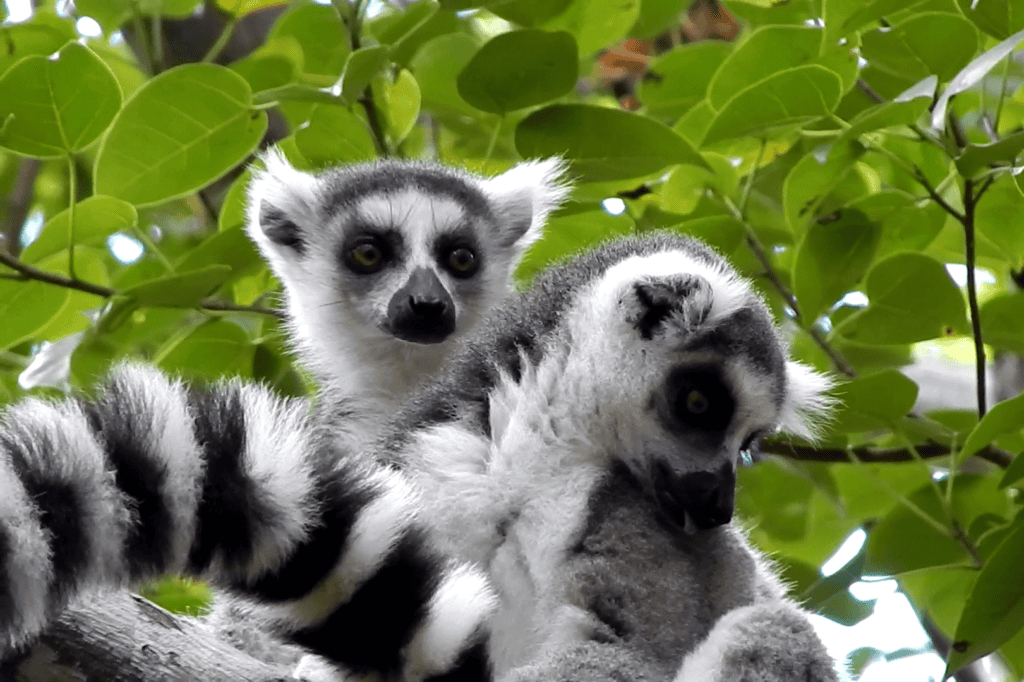
Anja Community Reserve
This is a community-run reserve which offers supreme scenery and is home to several troops of cheeky ring-tailed lemurs. Lemurs are viewed as sacred to the local people here, so they have never been hunted, which brings out the confident and playful side to the 400 ring-tails that live in this well-maintained park.
Given some of the lemurs of Berenty go quite bald in the dry season because of feeding on an introduced toxic tree; this park provides a worthwhile alternative for tourists wanting a lemur fix.
Anja Reserve is the most visited community managed forest and eco-tourist site on the ‘eighth continent’ and exists as a testament to the hard work of local people and their dedication to protecting the environment.
Ankarafantsika National Park
Ankarafantsika is an easily accessible national park home to an abundance of wildlife.
There are eight species of lemur here, and you are likely to see Coquerel’s sifakas, mongoose lemurs, Western woolly lemurs, common brown lemurs, and sportive lemurs. Ankarafantsika is also the only place in Madagascar where you may encounter the rare golden-brown mouse lemur.
In addition to Lemur sightings, visitors can enjoy a diverse range of experiences including hikes through the deciduous dry forest, atmospheric boat rides across Lake Ravelobe and the chance to see fossas up close. The fossa is the largest carnivore native to Madagascar and another creature well-worth seeking out if you have the time.
To read more about the flora and fauna in Madagascar, check out our guide to Madagascar Wildlife.
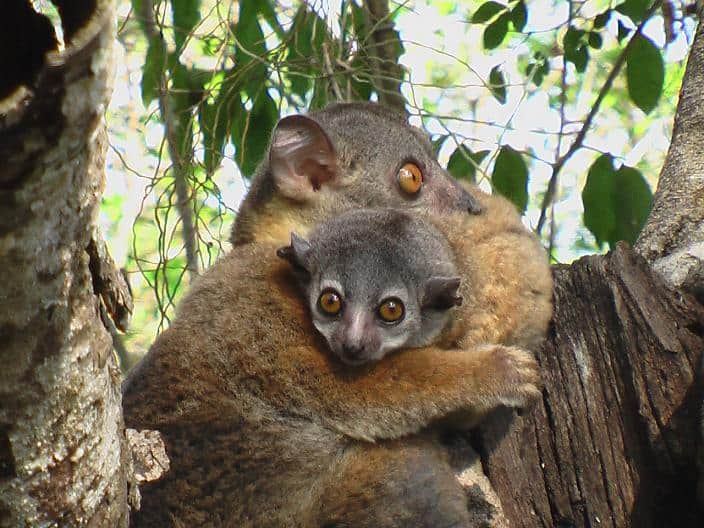
Kirindy Forest Reserve
The Kirindy Forest Reserve has the greatest density and diversity of primates in the world. Located north of Morondava on the west coast, it is the best reserve for seeing Madagascar’s endemic dry forest species.
Lemurs found at Kirindy include the Verraux sifaka and Red-fronted brown lemur. Night walks are very rewarding, offering opportunities to see many nocturnal species, including pale fork-marked lemur, red-tailed sportive lemur, Coquerel’s giant mouse lemur, fat-tailed dwarf lemur and grey mouse lemur. Visitors may even spot Madame Berthe’s pygmy mouse lemur, the world’s smallest primate!
The reserve is also home to 60+ species of birds (with many endemic), fosa – Madagascar’s largest carnivore – and the endangered Giant Jumping Rat.
Another big plus of visiting Kirindy is that the road to reach the reserve passes through the world famous Avenue of the Baobabs.
Make it happen
Remote River Expeditions – Madagascar is a small hands-on company. They take their name from their original 1985 expeditions exploring the rivers of the island. Since then, they have become specialists in creating truly unique vacations and learning experiences that cater to all ages and interests.
Tours range from 3 to 26+ days and include all-inclusive and half-board options. Multi-lingual, naturalist guides are also included. Costs start at around €100 per person, per day.
A sampling of their offerings:
Highlights of the West: Tsingy de Bemaraha a UNESCO World Heritage Site, Kirindy Forest Reserve and Avenue of the Baobabs.
Madagascar – Island of Contrasts: This tour contrasts the western dry forest and the eastern rainforest and their endemic flora and fauna.
Belo sur Mer – Kirindy Mite National Park: This tour promises a taste of relaxed village life, beautiful white sand beaches, snorkeling, and dramatic sunsets. According to the Huffington Post, Belo sur Mur is one of the ‘top 10 best honeymoon destinations in Africa!’
Baobab Quest – Beyond the Avenue of the Baobabs: An RRE original! Focusing on the endemic forests and wildlife of the Menabe region, this tour also offers pristine beaches and snorkeling options.
Madagascar – Highlights of the North: Includes Three Bays, Emerald Sea, Montagne d’Ambre N.P., Ankarana Special Reserve, Nosy Tanikely, Nosy Iranja, Nosy Komba, and whale watching (in season).
For more options, see Remote River Expeditions – Madagascar.
For more reasons to visit, check out Hilary Bradt and Daniel Austin’s guide to Madagascar.
